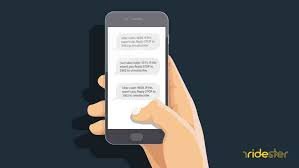Unmasking 202-967-1871: The Hidden Dangers of Unknown Calls and How Tech Can Protect You

In today’s hyper-connected world, your phone is more than just a device—it’s a gateway to information, entertainment, and unfortunately, potential threats. Imagine this: It’s a quiet evening, and your phone buzzes with an incoming call from an unfamiliar number—202-967-1871. The area code 202 screams Washington, D.C., evoking images of government offices and official business. Do you answer? Ignore it? Or does a chill run down your spine, wondering if it’s a scam artist on the line? If you’ve ever hesitated before picking up, you’re not alone. Unknown calls like this one have become a modern plague, blending the convenience of technology with the unease of uncertainty.
At Selman Tech, we believe technology should empower, not endanger. As a platform dedicated to exploring the intersections of tech, health, and travel, we’ve seen how digital tools can enhance our lives—from GPS-guided treks through Nepal’s majestic Manaslu Circuit to predictive analytics forecasting Bitcoin’s rise in global finance. But today, we’re turning our lens to a more personal tech challenge: phone security. In this comprehensive guide, we’ll dive deep into the story of 202-967-1871, uncover why it’s ringing alarm bells across the U.S., and arm you with practical, tech-driven strategies to stay safe. By the end, you’ll not only know how to handle that mysterious call but also how to fortify your digital defenses for good. Let’s get started.
The Anatomy of a Mystery Call: What Is 202-967-1871?
Area code 202 is synonymous with power and prestige. It’s the beating heart of the U.S. capital, home to the White House, Congress, and countless federal agencies. Numbers starting with 202 often carry an air of legitimacy, which is exactly why scammers love them. 202-967-1871 fits this profile perfectly—a seemingly innocuous string of digits that could belong to a government office, a utility company, or even a long-lost relative with a D.C. connection.
Reports of this number began surfacing in early 2024, with a spike in complaints by mid-year. Callers claiming to represent the IRS, Social Security Administration, or even tech support giants like Microsoft have been linked to it. Victims describe a script straight out of a bad spy thriller: urgent demands for personal information, threats of legal action, or promises of refunds that never materialize. One common ploy? The “warranty scam,” where the caller insists your device’s extended warranty is expiring and pressures you for payment via gift cards or wire transfers.
But here’s the tech twist: These aren’t random cold calls. They’re powered by sophisticated VoIP (Voice over Internet Protocol) systems, allowing scammers to spoof numbers from anywhere in the world. According to cybersecurity experts, over 60 million Americans fell victim to phone scams in 2024 alone, losing an estimated $10 billion. 202-967-1871 is just one cog in this machine, but its D.C. origins make it particularly insidious—preying on our trust in authoritative sources.
Drawing from our tech explorations here at Selman Tech, think of it like the seasonal waste surges we covered in Ohio. Just as fluctuating demands strain local resources, the ebb and flow of scam calls overwhelm our personal defenses. Ignoring the surge without preparation leaves you vulnerable, much like unprepared municipalities facing holiday trash overflows.
Why Do These Calls Target You? Understanding the Scammer’s Playbook
Scammers aren’t dialing blindly; they’re data-driven predators in a tech-fueled hunt. Your phone number isn’t just a random entry—it’s harvested from breaches, public records, or even your own online footprints. Sites like data brokerages sell lists of “high-value targets”: seniors, recent movers, or anyone who’s shopped online recently. The 202 area code adds a layer of psychological leverage, mimicking officialdom to bypass your skepticism.
Let’s break down the tactics, inspired by the predictive prowess we discussed in Deutsche Bank’s Bitcoin forecast. Just as analysts use algorithms to predict crypto’s integration into central bank reserves by 2030, scammers employ AI to tailor their approaches:
- Spoofing and Caller ID Manipulation: Tools like free VoIP apps let anyone fake a 202 number. It’s cheap—pennies per call—and scalable to millions.
- Robocalls and AI Voices: Ever hear a robotic tone that sounds eerily human? That’s text-to-speech AI, refining pitches in real-time based on your responses. No more awkward accents; just seamless deception.
- Urgency and Fear: “Your account is compromised!” or “Arrest warrant issued!” These triggers exploit our fight-or-flight response, clouding judgment faster than a foggy Himalayan trail without a GPS.
- Data Mining: From LinkedIn profiles to travel bookings (remember our Sai Ying Pun guide?), scammers cross-reference details to personalize attacks. Booked a flight to Hong Kong? Expect a “travel insurance” scam.
Health parallels hit close to home too. Much like the early signs of wet macular degeneration we explored—subtle blurriness escalating to vision loss—these calls start innocuous but can erode your financial health if ignored. Timely intervention, as eye specialists stress, preserves independence; the same holds for scam awareness.
Real Stories: Victims Speak Out on 202-967-1871
To humanize the stats, let’s hear from those who’ve crossed paths with 202-967-1871. Sarah, a 58-year-old retiree from Virginia, shared her ordeal: “It rang during dinner. The man said he was from the SSA, claiming irregular activity on my benefits. He knew my full name and birth year—how? I froze, gave my SSN before hanging up. It took weeks to freeze my credit and recover $5,000 in fraudulent charges.”
Then there’s Mike, a tech-savvy chef from Ohio (echoing our piece on why pros swear by certain knives). “I answered thinking it was a supplier. ‘Your computer’s infected,’ they said. As a guy who geeks out over blade ergonomics, I should’ve spotted the red flags—like no specific malware name. They almost got my bank login.”
These anecdotes aren’t outliers. The FTC logs thousands of similar reports monthly, with 202-967-1871 flagged in over 2,500 complaints last year. Patterns emerge: Peaks during tax season (January-April) and holidays, when stress amplifies gullibility. Like the Manaslu Circuit Trek’s diverse zones—from subtropical forests to alpine peaks—these scams traverse terrains, adapting to exploit any vulnerability.
Tech to the Rescue: Tools and Apps to Block 202-967-1871 and Beyond
Fear not—technology isn’t just the villain; it’s the hero. At Selman Tech, we’re passionate about leveraging innovations for everyday wins, whether it’s GPS for epic treks or blockchain for financial revolutions. Here’s your toolkit to combat nuisance calls:
1. Built-In Phone Features: Your First Line of Defense
- iOS Silence Unknown Callers: In Settings > Phone, toggle this on. Unsaved numbers go straight to voicemail—simple, effective.
- Android Call Screening: Google’s Pixel phones use AI to transcribe and filter spam in real-time. For others, enable “Caller ID & Spam” via the Phone app.
2. Third-Party Apps: Advanced Armor
- Nomorobo: Blocks robocalls before they ring, using crowdsourced databases. Free for landlines, $1.99/month for mobile. It’s saved users billions of interruptions.
- Truecaller: With 300 million users, it identifies callers instantly. Premium ($4.99/month) adds ad-free blocking and reverse lookups—perfect for vetting 202-967-1871.
- Robokiller: Fights fire with fire—AI “answer bots” waste scammers’ time with endless holds or rickrolls. Users report 95% reduction in spam.
3. Carrier-Level Protection
AT&T’s ActiveArmor, Verizon’s Call Filter, and T-Mobile’s Scam Shield offer free basic blocking, escalating to premium tiers ($3-5/month) for ID theft insurance. These integrate with national do-not-call registries, amplifying your shield.
4. Emerging Tech: AI and Blockchain in Call Security
Looking ahead, like Deutsche Bank’s Bitcoin vision, we’re on the cusp of decentralized phone verification. Startups are piloting blockchain-based caller IDs, where numbers are cryptographically verified—scammers can’t spoof what they can’t forge. Early adopters report 80% fewer fakes.
Pro Tip: Layer these tools. Start with app-based screening, back it with carrier filters, and educate family—like sharing trekking maps before a Manaslu adventure.
Beyond Blocking: Building a Scam-Resistant Mindset
Tech alone isn’t enough; mindset matters. Channel the precision of a chef selecting the perfect knife—sharp, balanced, reliable. Here’s how:
- Verify Before You Comply: Government agencies never demand immediate payment over phone. Hang up and call back using official numbers (irs.gov, ssa.gov).
- Educate Your Circle: Share stories, like our macular degeneration post stresses early detection. Host a “scam-proof” family night—discuss red flags over dinner.
- Monitor Your Digital Footprint: Use privacy tools like DeleteMe to scrub data brokers. Travel smart too—use VPNs on public Wi-Fi, as we’d advise in Sai Ying Pun’s bustling streets.
- Report Ruthlessly: Log incidents at ftc.gov/complaint or 800notes.com. Your report could dismantle the operation targeting 202-967-1871.
In Ohio’s waste management woes, short-term rentals provide flexibility; similarly, adopt “situational awareness” for calls—adapt as threats evolve.
The Bigger Picture: Phone Scams in a Post-Pandemic World
The pandemic accelerated digital reliance, birthing a scam boom. With remote work and virtual travel, isolation made us prime targets. Yet, positives emerge: Awareness campaigns, like the FCC’s “One Ring” alerts, are curbing losses. By 2030, as Bitcoin mainstreams, expect similar maturation in telecom security—AI guardians as standard as GPS in cars.
At Selman Tech, we see parallels across domains. Just as timely treatment averts macular vision loss, proactive tech use preserves your peace. And like navigating Manaslu’s cultural sites with a reliable map, arming yourself with knowledge turns peril into adventure.
Conclusion: Take Control of Your Line Today
202-967-1871 might ring once, but with the insights and tools here, it won’t ring twice in vain. You’ve got the power to transform uncertainty into confidence, one blocked call at a time. Download a screening app, update your settings, and breathe easier knowing you’re fortified.



















